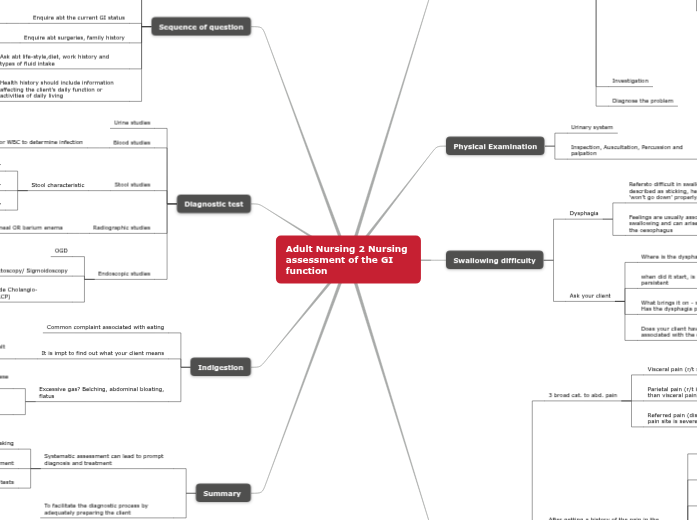jonka Ting Ting 13 vuotta sitten
427
Adult Nursing Lecture 1

jonka Ting Ting 13 vuotta sitten
427

Lisää tämän kaltaisia
Pay attention to what brings on the discomfort and what relieves it
Consistency
Odour
Color
Coping stress
Work
Sleep-rest
Elimination
Activity-Exercise
Nutrition